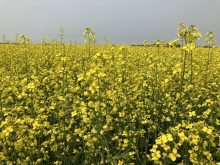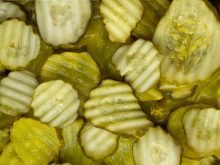SOME of the Canadian calves that hit the ground this spring are destined for uncertain export futures.
In an ordinary year, about half the cattle and beef produced in Canada would be exported to the United States, generating about $3.35 billion.
But 2004, when some of this spring’s calves will be marketed, will not be an ordinary year. In September next year, the U.S. will implement its country-of-origin labelling legislation, and Canadian exports of beef and pork may never be the same.
The new American rules will require imported beef and pork, along with lamb, fish, fresh and frozen fruits and vegetables, to be labelled by country. The idea, of course, is to improve returns to American producers and encourage domestic consumption.
Read Also

Growth plates are instrumental in shaping a horse’s life
Young horse training plans and workloads must match their skeletal development. Failing to plan around growth plates can create lifelong physical problems.
It sounds reasonable in theory. But in practice, it will harm the North American beef and pork industries, particularly those in Canada that rely heavily on the U.S. market for exports that support a growing industry.
How? Here’s what various industry groups and analysts predict:
- A $280 million to $300 million annual cost to the Canadian beef industry via export reductions.
- A $90 reduction in the market price per head of Canadian cattle.
- A $14.50 reduction in price per finished Canadian and American hog.
- Negative effects on market prices for cattle and hogs across North America, including Mexico.
- Costly implementation that is likely to require development of an expensive and unpopular American national identification system.
COOL legislation is a scheme likely to prove unworkable and damaging, even to those it is designed to serve.
Lest this be considered an example of “America bashing,” consider that there is plenty of opposition to COOL even within the U.S. – large and powerful groups including the National Cattlemen’s Beef Association, National Pork Producers Council, National Meat Association, National Food Processors, Texas Cattle Feeders Association, meat packers and retailer groups. Even the Republican administration is thought to be against it, but the legislation passed as part of the much larger U.S. farm bill.
What can Canada do about another country’s pending policy problem? Plenty, particularly if COOL proves to contravene the North American Free Trade Agreement, CanadaÐU.S. trade agreement or World Trade Organization rules, as many think it will. Those options will become clear if and when COOL is implemented.
But Canada has options even now, and it is using them. Cattle and hog representatives are working with Americans to emphasize the shortcomings of COOL and encourage a voluntary rather than mandatory system.
Industry groups are targeting U.S. sales in the restaurant and food services industries, which are exempt from COOL regulations.
Canadian livestock industry groups are also working to find alternative markets. As an example, in 2002, Canadian beef improved its sales to Asia and Mexico for the 11th consecutive year.
Beyond that, branded Canadian beef and pork, known for its quality, has promise in the U.S. market, even with COOL.
Asks Troy Marshall, analyst with U.S.-based Cow-Calf Weekly: “Will countries like Canada – after being forced to label its product – work to create a brand with stringent product specifications that will, in effect, enable that country to create additional value for their product, thus positioning it above the undifferentiated USA product?”
Mandatory COOL could have the effect of “encouraging consumers to try Canadian branded beef,” say the Texas cattle feeders, as quoted in Cattle Buyers Weekly.
Says the Alberta Agriculture newsletter Bacon Bits: “Marketing Canadian-labelled pork in the U.S. is unlikely to detract from product sales, as American consumers recognize Canadian pork as a product of excellent quality.”
As in most things, quality tells.
The quality of Canadian product and the quality of Canadian intelligence into the ramifications of COOL will serve the livestock industries well. Support from producers, consumers and government will also be crucial.
Prairie farmers in particular are poised to expand livestock operations. Their futures will depend on continued efforts in the agricultural community to circumvent or offset the damage from COOL until the U.S. realizes the folly of the exercise.














